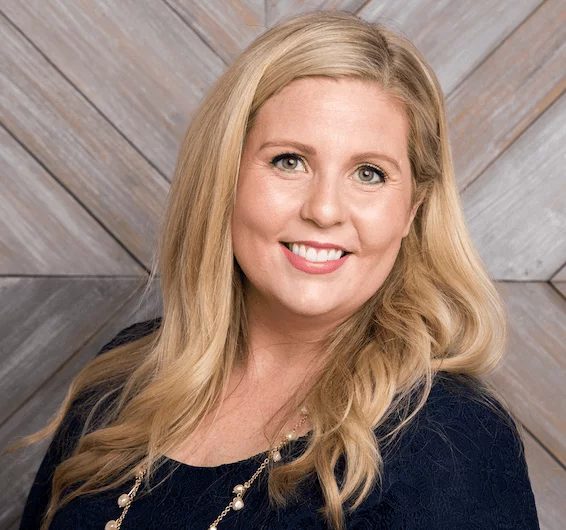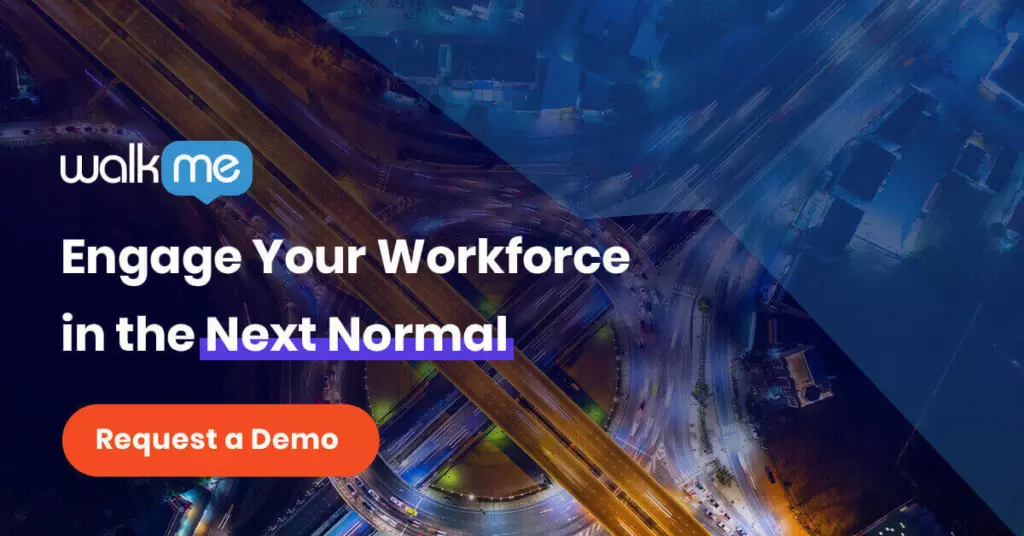Happy DAP Professionals Day! This July 28th, we wanted to take a deeper look at a rapidly growing role in enterprises worldwide, the DAP professional, and how they’re empowering businesses to reach their strategic objectives.
Implementing digital adoption solutions can be a complex task that requires extensive planning, coordination, and above all, the right people. But with 70% of enterprise leaders unaware of who is managing their digital adoption strategy, it isn’t surprising that organizations often fail to maximize their software ROI.
Using internal WalkMe data and interviews with DAP professionals, we’ll break down why DAP professionals are needed and the role they play in your organization. Lastly, we’ll dive into how a team of internal DAP professionals can take your digital adoption strategy to the next level, allowing you to reach your strategic goals and use your software to its fullest potential.
Too many apps, not enough coordination
For many organizations, digital adoption is often a fractured process without centralized management, often resulting in little inter-departmental coordination and wasted software expenditures.
This was evidenced in WalkMe’s annual State of Digital Adoption report, which found that large organizations waste more than $26 million investing in digital transformation projects. Additionally, 27% of enterprise applications onboarded as part of digital transformation initiatives have overlapping capabilities, pointing to the cost cutting potential of a successful digital adoption strategy.
The bad news is that the problem appears to be getting worse. On average, businesses add 17 new applications a year. Considering the typical enterprise employee already works with around 27 applications, it’s no wonder that surveyed organizations believe they only use 50% of their applications’ potential.
The good news is that it’s possible to get your digital transformation strategy back on track, which is exactly where the DAP professional comes in.
What is a DAP professional?
The increase in popularity of DAP solutions, like WalkMe, has given rise to a new career path – the DAP professional. With 4,600 people currently listing WalkMe and/or DAP expertise on their LinkedIn profiles, a 30% increase year-over-year, enterprises of all sizes are taking note of how DAP professionals can help manage their digital transformation initiatives.

And it’s not only WalkMe who has noticed the increased demand for DAP professionals. Leading research firms are calling out the need for skilled DAP professionals as a specific organizational role, with responsibilities that include:
- Managing your Digital Adoption Platform (DAP)
- Detailing the scope of your digital transformation efforts
- Formulating goals and needed functionalities
- Building enablement and rollout plans
- Communicating with internal stakeholders
- Training and user testing
- Internal support
Who are DAP professionals?
We’d like to introduce you to two DAP professionals to better understand the scope of their work and how they came to assume their multi-faceted roles.
Steffaney Zohrabyan

How did you become a DAP professional?
I first learned about Walkme while I was completing my master’s degree in Learning and Technology early in 2018. At that time I was working in the translation industry and trying to help onboard translators to machine translation software, instead of using more rudimentary methods of translation, Walkme was the perfect solution!
This brief experience led me to my first role as a DAP manager. The company had a fantastic field training program, but they were migrating from Salesforce Classic to Salesforce Lightning and moving a lot of their functionality and workflow. It was a big company-wide change that required a lot of heavy lifting and a lot of training. As a DAP manager, a big part of it was creating awareness: sending shoutouts to let our 10,000+ Salesforce users know about updates and new Salesforce Lightning features, as well as training and best practices, to help the users acclimatize to the new features and how they fit into their workflow.
What have been the greatest successes in implementation and DAP usage at your company?
The greatest success in implementation was right after our merge with Sprint. The Salesforce data from our two companies had merged overnight and accounts that were overlapped between the two accounts were considered “co-owned.” The company had done a great job getting as much communication out about these co-owned accounts in meetings and emails, but I knew that nothing was as important as getting them alerts right on their screen. We were able to use WalkMe to autoplay shoutouts when a user was on an account that was considered “co-owned.” This shoutout let them know it was co-owned, what that meant for them as a seller, and gave them a short walk-thru to help them find the contact information of the co-owner at Sprint.
Not only did we have 100% engagement with the shoutouts, but we had nearly 100% engagement with the users following the walk-thru to find the account co-owner. This saved our sales manager and our sales teams a lot of time and confusion and really let our sales managers know that WalkMe was more than just a training tool, but strategic software to help their sales teams in real-time.
How do you rally people in the company around digital adoption?
I actively search for initiatives and new programs in my company that WalkMe can be helpful for. For example, I knew another instructional designer was working on a training for a Salesforce Plug-in, ZoomInfo. She did an amazing job with the training, but I knew that having a tool inside Salesforce to engage users right when and where they needed was invaluable. Even though nobody asked me, I built out the WalkMe content to not only get a user prospecting with ZoomInfo, but I automated steps for them along the way, taking away clicks and making the tool seem even more intuitive and easier than it was.
Employee engagement and usage increased by 30% within a week, in comparison to the initial launch where it took several weeks to reach 30% usage with just the standard training and communication solutions.
Are you learning a lot on the job, how often are you enriching your DAP knowledge?
I’m constantly on the WalkMe Community page. They created a fun and competitive culture within their DAP community and I’m so here for it! Every DAP professional wants to come up with the coolest and most innovative solutions, and I’m able to learn so much from other builders.
Also, I think a big positive of the current situation has been the different WalkMe webinars that highlight WalkMe customers and discuss how their solutions are helping them during this time. Hearing how industry leaders and executives are helping their teams and customers succeed with WalkMe is a huge inspiration and has helped as my own team pivots to the new normal.
Martin Bowman

How did you become a DAP professional?
I’m a trainer in our Global Business Change team. Our VP had used WalkMe in a previous company and was in the early stages of introducing WalkMe to Sage, setting up a proof of concept in our internal procurement app.
I had just delivered classroom training to an early-adopter pilot team for our CRM migration to Salesforce. I was asked to look at WalkMe and help identify any immediate benefits we could find within Salesforce to support the wider rollout. I loved it. We set up an editor and I just started trying different things to see what worked and how far I could push it.
My goal for Salesforce was to reduce the impact of classroom training and give our colleagues more support in real-time through WalkMe. And it did exactly that. We reduced classroom training from 5 hours to 3.5 hours across our entire UKI Customer Services organization. The time saving was incredible.
WalkMe is a key part of supporting colleagues with adoption, consistency, and confidence in our new global processes.
What have been the greatest successes in implementation and DAP usage at your company?
Our biggest success has been within Salesforce. We see an average of 12,777 walkthrough plays every day. We save hundreds of hours of colleague time each month through automation. When it comes to feedback; 80% of colleagues have voted that the content has helped them complete their tasks. We’re thrilled with how well it’s been received! And this is just one example.
Through other apps we’ve reduced the number of Service Now tickets submitted, reduced the number of errors made in webforms, and increased visibility of tasks to meet business deadlines. The success of WalkMe is the sum of all the small improvements and efficiency savings we see in every system.
How do you rally people in the company around digital adoption?
I’m part of a dedicated Change Management team who was asked to support the launch of WalkMe at Sage. We have a DAP Manager, a Salesforce DAP Specialist, and a team of content builders to drive our delivery and maintenance of WalkMe.
We first branded it as In-App Support, powered by WalkMe. We wanted to give it a name to reflect what is in it for our colleagues. We created an internal microsite with FAQs to be a central point of information. We created branded merchandise, such as hoodies, which we’d wear around the building and encourage people to ask us about it.
But the easiest way to generate interest in WalkMe is to just deploy good content which makes people’s jobs just a little bit easier. Once people feel the benefits for themselves, that’s it – they’re sold.
From a change management point of view, and in my role as a trainer, we also review every new product/system for its suitability to deploy WalkMe. We’ll make recommendations to product managers on what more we can accomplish using WalkMe’s functionality. People are often pleasantly surprised when you explain what you could achieve in their application.
Are you learning a lot on the job, how often are you enriching your DAP knowledge?
I learn a lot on the job. I’m a trainer, but going against everything I preach, I’m the kind of person who learns more from just diving in and giving it a go before properly learning how things work. To be honest, I learned the basics of WalkMe through trial and error before I looked at the WalkMe University content. It’s a little backward, but it works for me and WalkMe was intuitive enough to let me do this.
I also get inspiration from how others have used WalkMe and I’ll run off to replicate what they’ve done in my own editors. At Sage, the builders actually get together often to review each others’ work and share best practices. It’s a great approach that works well for us.
Advancing your digital strategy with a Center of Excellence
Depending on your organization’s needs, you might want to consider creating an internal Center of Excellence (CoE) to facilitate your long-term digital adoption strategy. Specific roles in the CoE include:
- Program manager – Responsibilities including running the digital transformation initiative, creating the strategy, overseeing project-level execution, and developing the governance model.
- Project manager – Responsibilities including owning the DAP projects from beginning to end while managing the scope, budget, schedule, and quality of the result.
- Developer – Responsibilities including designing and building DAP content.
- UX designer – Responsibilities include ensuring DAP content is easy, and even a pleasure to use.
- Technical architect – Responsibilities include making sure the DAP fits into the existing tech stack.
- Evangelist – Responsibilities include communicating the value of DAP across your business and offering insights to improve your digital strategy.
With the DAP professional role still in its infancy, industry standards and best practices are constantly changing. This means that there will likely be some trial and error as you fine-tune your CoE and DAP strategy. Stay tuned for future updates as we more clearly define these roles and responsibilities.


